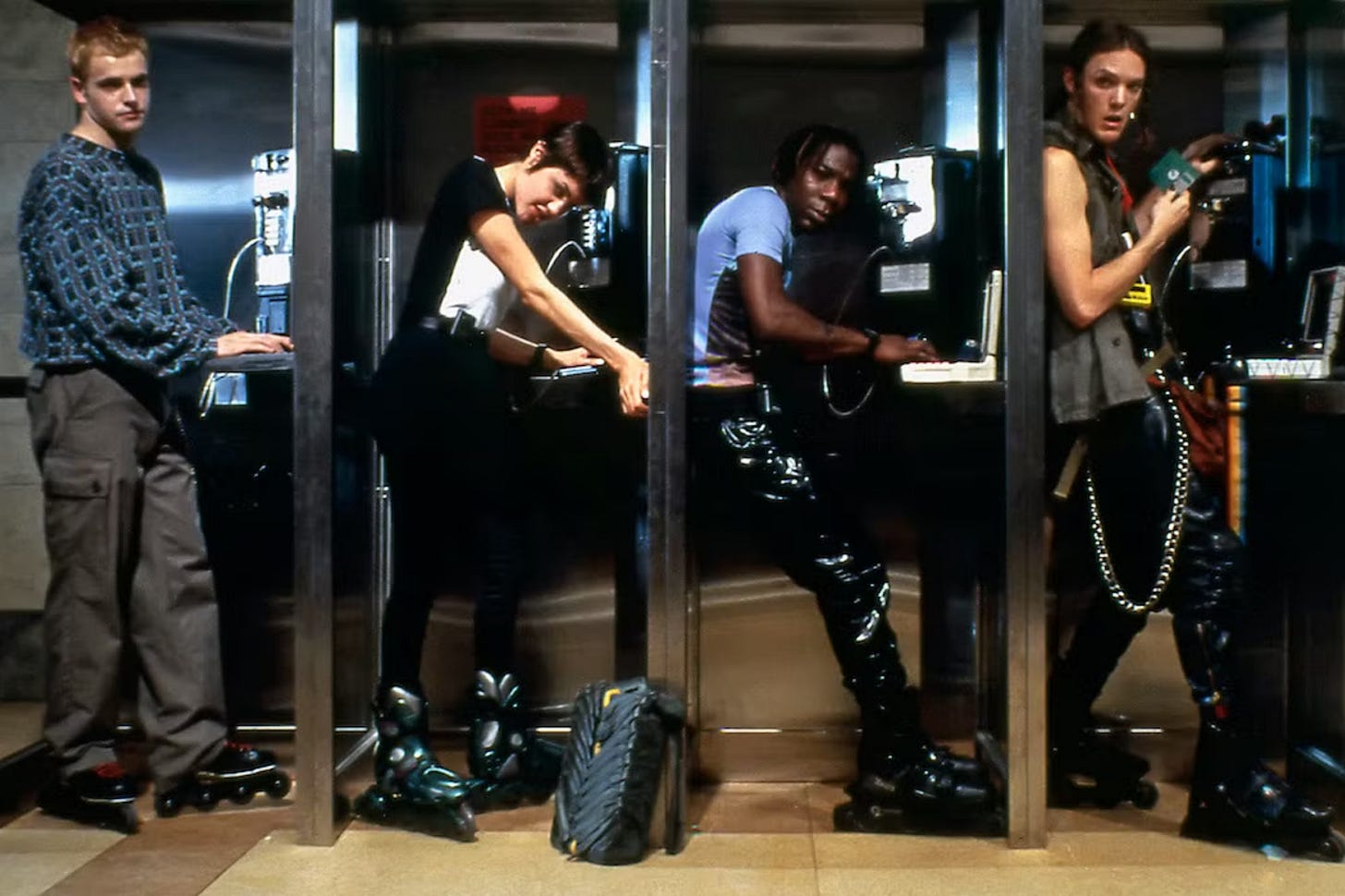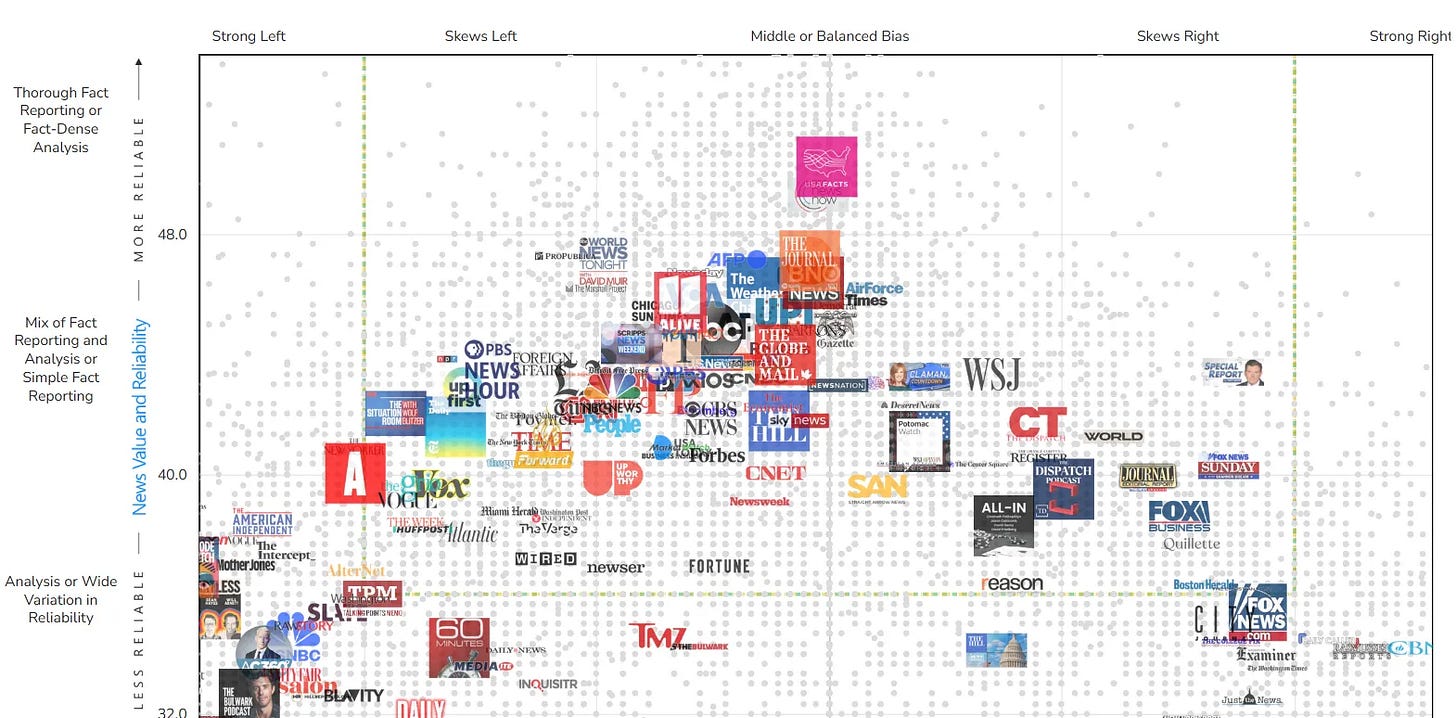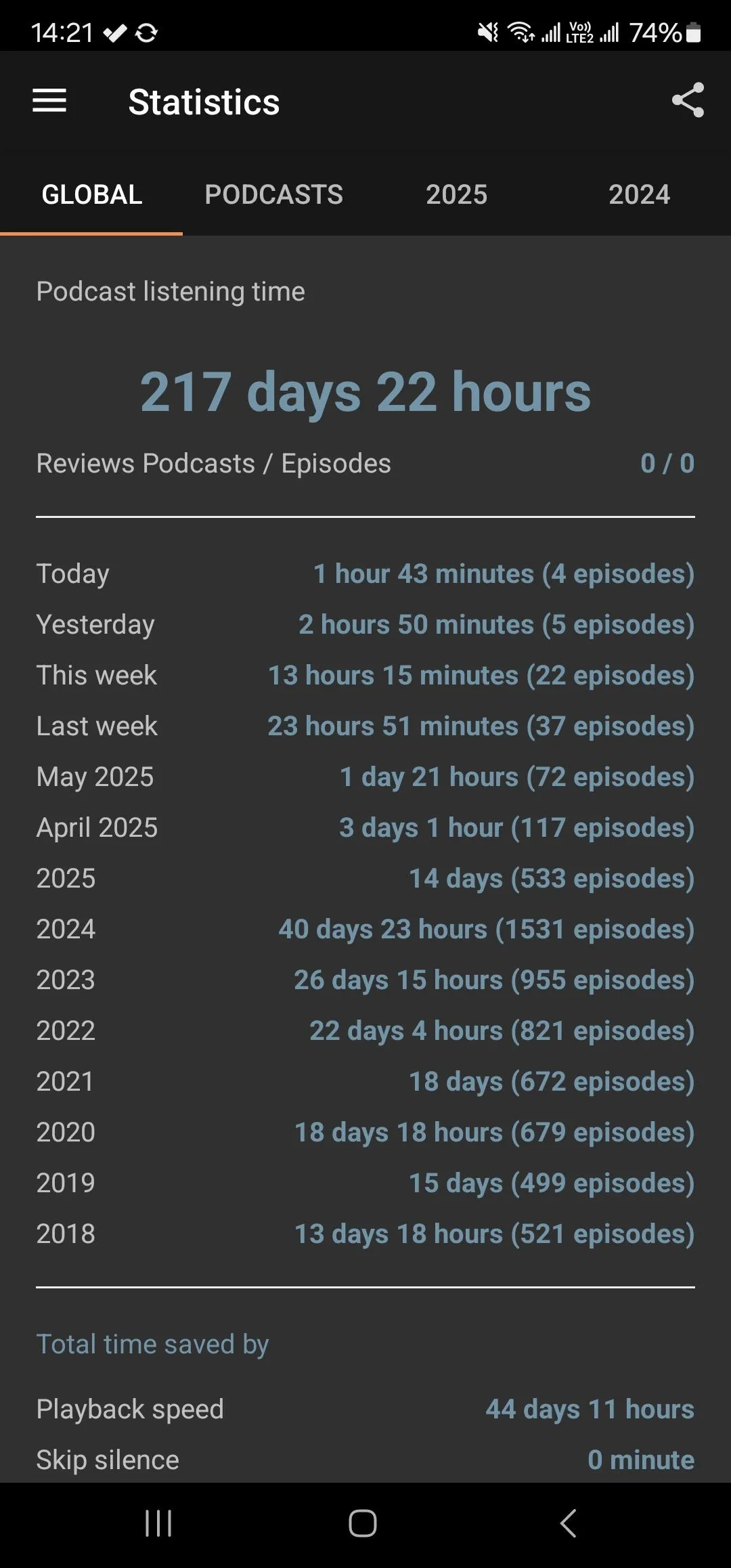Z.17: Hacking the Algo
It’s not hard to find articles decrying Social Media (SM) algorithms for controlling our world these days. But the algorithms aren’t (yet) general AI agents with the ability to make decisions. Today they’re just fancy math problems.
Blaming the algos is excusing our own role in the process.
Now before you think I’m punching down, I say this as someone whose media diet is easily 95% curated by social networks. I only go direct to a single ‘traditional news outlet’, The Economist.1 It’s not that I never read stories by CNN, FoxNews or The New York Times; it's just those stories have to make it through SM algos to reach me.2
I’m not going to get on my high horse and tell everyone their own SM use is wrong per se. I’m just going to describe mine. My critique is with those who don’t own their own personal agency in the process. You don’t have to make a choice about what and how you consume. But not making a choice is, in my opinion, a dumb one.
Read, But Verify
Even if a story navigates the wickets of my SM algo filters, I usually still bounce it against two additional gate keepers. For contentious issues or ones where I don’t know enough about the counterpoint, I check with Ground News, which I’ve found is the fastest way to get an outline of an issue. It gives you a quick sentiment analysis and puts the counter-argument one click away.
For several years I’ve been using Ad Fontes Media to evaluate the overall reliability of sources. To be clear, both of these tools are also algo-filters, and they are subject to their own biases. I’ve just found them to be better arbiters of information than other tools out there. Again, use the algos, just with intention.
There are also sources I will almost never read. I’ve found Huffpost to be equal parts sloppy and clickbaity, and so it takes a lot for me to even open one of their hyperlinks. I generally discount Fox News stories, but I do read Fox Business when they pop up. I’m not wedded to just ‘news’ sources, in particular when it comes to technical subjects; but that broadly outlines the left and right limits of my ‘mainsteam’ media diet.
Now this only applies to the articles that get through the SM filters in the first place. Plenty of people complain about ‘mainstream media’ not covering or reporting issues and viewpoints and my SM gate keepers are no different.
You’re The Product
Almost every SM platform has the same goal: monetize our eyeballs. ‘Maximize engagement’ is generally how they describe it. Twitter/X, Facebook/Instagram, LinkedIn, or any of the myriad of other apps out there are each private companies pursuing profit by trying to sell our attention to advertisers one microsecond at a time.
While pretty uniform in goal across apps, each has come up with different ways to answer that same fancy math problem. I don’t have any direct access to any of the code, but by observing what does and doesn’t get into my infinite scroll, I’ve been able to tease out some broad strategies they appear to be using.
The SM tools we use have outsized impact on what we hear about, in particular since most of us aren’t going to the news sources directly. We’re not collectively sitting down each night with Walter Cronkite anymore. SM algos are gate keepers, and which apps you use will impact what you see. But which apps you don’t use will also shape your diet. In my case I don’t use a lot of them. I’m going to do this reverse Clint Eastwood-style, from the worst to the best. First up the apps I don’t use.
The Ugly
Perhaps most impactfully, I’m not on TikTok. This isn’t really an ideological stance. Aside from the constitutional question of a president just refusing to follow a law passed by Congress, I don’t really care about TikTok. But TikTok is banned on government devices. Since I’ve spent most of my career working in buildings I can’t bring my phone into, my app selection is heavily impacted by which websites I can access via browser on my government computer. At the end of a long day, when I finally get outside and can access my phone, I typically have more than enough alerts to catch up on, so I never bothered joining TikTok.
I don’t use Bluesky or Truth Social either, because I’m not interested in nakedly partisan filter bubbles regardless of party. I never joined Threads since I haven’t seen what it’d get me that Instagram doesn’t already. I have a Facebook account but I pretty much only get on there to a) talk with a boomer or b) buy or sell gently used furniture.3 I’ve never bothered to checkout Mastodon, and Medium’s spam annoyed me enough to block them.
Twitter / X
I didn’t start using Twitter until I was a graduate student in 2012. My fellow students gave me a hefty list of terrorism and national security accounts to follow, so I signed up. After just one weekend, I’d discovered Twitter was the fastest way to get wrong news in the world. My opinion hasn’t improved.
Credit where credit is due, Twitter did change the way news was reported. I was studying terrorism back at Kings and it provided a prefect frame to understand the change in media. Black September didn’t attack on the 1972 Munich Olympic Games because they hated sports, it was because that’s where the cameras were. Terrorism before SM was heavily biased towards attacking sites where the media was already present. But in 2012, when I was studying at King’s in London, terrorism could be live tweeted. The media channels have been chasing SM ever since.
Twitter’s algo never was a very good source for me, but since it’s switched to X, I’ve all but stopped logging on to the app. I share my latest Substack post and then promptly log back off. This is because X’s approach to maximizing engagement appears to mimic ‘grisly car crash porn’. Their algo heavily weights how long we watch or listen to things, down to those microseconds. As a result, X floods our feeds with the intellectual equivalent of car crashes. We find ourselves almost involuntarily rubber-necking.
X has discovered that we’ll stop and ‘engage’ with things that make us angry even more than things we like. So the app pushes controversial and anger-inducing content to keep your eyeballs, so much so it can feel like an infinite scroll of head-on collisions between a train and a school bus. This has most recently been encapsulated by the proliferation of ‘point counter-point’ style uploads where the video starts with a short clip of one political side of an issue followed by a take down. Which side you’re on doesn’t really matter, the video captures and antagonizes both sides, which drives ‘engagement’.
The Bad
Instagram
I don’t find Instagram vastly superior to X these days. Which is a shame, because it actually used to be.
Before Zuckerberg decided to stop deemphasizing political content, Instagram was actually a fun place for me to get my daily moment of Zen. When the political suppression filters were on, Instagram didn’t show me partisan car-crash porn. The app has the same bias toward watch time that X does, but it was at least smart enough to know that while rubber necking is a human instinct, it’s not necessarily the thing we actually want. When you’re trying to use my attention to leverage me into actually buying things, this seems like a winning strategy — one Instagram has sadly abandoned.
Before the change, Japanese woodworking videos were my Instagram kryptonite. I’d be quietly swiping past a few friends' posts and milmeme accounts and then suddenly there was a quiet video of just hands slowly crafting simple joinery. I was stopped like a deer in headlights. I have a similar weakness for good cooking videos, which is why — coupled with a wicked sweet tooth — Amaury Guichon always found his way into my feed. What can I say, I respect craft.
And then one day, for no clear reason I can discern, Instagram fed me my favorite account, one I instantly subscribed to: Streetcraft. I can’t help it. Somehow urban planning just fascinates me. I’m also very pro-roundabout, even more so after a year living in Australia. I simply can’t swipe past the videos as they explain how to fix a simple traffic intersection, or the potential of our neighborhoods if we’d just ditch crappy self-imposed zoning rules.
Before the recent change, Instagram didn’t feed me a lot of news. But it did give me educational content, which I enjoy. And it also lead me to more than one Kickstarter page, which in theory is the conversion the app was going for. Get me scrolling and find an advertisement that catches my interest enough to click and then potentially buy.
But lately Instagram has descended into a lot of those political point counter-point videos I mentioned above. Admittedly, I was already trending away from Instagram when most of the milmeme accounts started sharing heavily partisan content. I’ve been disengaging more and more from the app as a result. I now mostly only go on to share my Downrange Data posts.
Reddit
I do like reddit, though only in certain places. I’ve found r/worldnews will occasionally find international stories I didn’t hear about. But r/politics generally serves up too many biased sources for my tastes, and r/conservative is even worse. Instead, reddit is mostly for my niche nerdy guilty pleasures, like r/dataisbeautiful which serves up innovative and clever ways to display data, and r/theocho which is everything you ever wanted in an obscure sports channel. Whenever you need a troubleshooting guide, be it for a video game or a car, redditors have your back.
LinkedIn
I was a bit of a latecomer to LinkedIn as a SM platform. I didn’t even think of LinkedIn as SM after catching a 2023 episode of Slate’s ‘What Next:TBD’ which reported more influencer and SM users were publishing on the site. The draw appeared to be that, since accounts were ostensibly true name, there was less bot spam and people weren’t as likely to spew hate-inspiring posts.
LinkedIn’s algo hasn’t been as easy to reverse engineer for me as the other apps, in part because aside from some ads, you basically don’t see content from outside your contact list unless someone inside it comments or amplifies it for you. It’s not a bad app, and I do find the occasional interesting story on LinkedIn, though you do have to wade through a lot of low effort and LLM generated content. Over the last year I have also seen a spike in the amount of nakedly partisan content on the app. Whether this is the algo trying to get the same engagement stats, or just a result of the Xodus isn’t clear. Regardless, it’s not the content I’m looking for, which is why LinkedIn lands in the ‘bad’ column. Better than the ‘ugly’ of twitter, but not good enough for ‘good’.
The Good
Substack
I’ve been using Substack for a year now. It’s an interesting SM platform, in part because it’s monetization strategy is different. Other apps monetize eyeballs and screen time on the infinite scroll. Substack actually encourages slow, uninterrupted reading. Substack isn’t selling ads directly.
To me, Substack is an evolution on the disruption of Twitter. It gives creators their own platform. You don’t have to read The New York Times to get a Nobel Prize-winning economist’s writing anymore, you can get it directly from Paul Krugman’s Substack. Nate Silver left FiveThirtyEight years ago, but he was an early adopter of Substack.
Substack makes its money when people who write on Substack make money. It’s not as focused on the ‘engagement time’ or flash in the pan virality; it even gives you convenient heads up on how long a post will will take to read. Substack’s algo understands that it’s not necessarily how long you look at something that determines how much it moves you. Substack understands fans.
While I listen to Taylor Swift on Spotify, I’m not going to buy her albums. But Dropkick Murphys and Flogging Molly? I’ll buy ever single album, even the mediocre ones. The difference is TSwift is music I listen to, and the others are bands I’m a fan of. I’m not judging Swifites. I enjoy her music. It’s just I’m never going to personally fork out the money for a Taylor Swift concert. But I will drive seven hours to catch a live show of Nathaniel Rateliff & the Night Sweats.
Substack uses this alternative means to metric their engagement. I think Taylor Swift has individual songs with more plays than the combined discographies of all three of those other bands I mentioned. But there’s a difference between what you’ll consume and what you’ll pay for. Substack seems to understands this, so its algo is a little different than the previous SM apps I’ve covered.
YouTube
YouTube’s algorithm isn’t perfect, and has drawn a lot of flack for ‘funneling’ people into conspiracy theories and the ‘manosphere’. This hasn’t been my experience though, likely due to how I interact with the algo.
Until grad school, I thought YouTube was just for cat videos. Then YouTube randomly threw Crash Course’s ‘2,000 years of Chinese History’ onto my feed.4 Unlike the above apps, YouTube throws ads at you in the middle of content you are watching, which means it get’s a different pulse on your engagement. It’s not as much about what you start watching as it is about what you keep watching. In the case of my family, Crash Course naturally led us to Vlogbrothers, Hank and John Green’s still running experiment with YouTube from 2007. Which next led to SciShow. Having firmly established an interest in science, the algo promptly followed up with Minutephysics, SmarterEveryDay, Veritasium, and a slew of others.5
At this point the YouTube algo had us pegged for people who like educational media that cites its sources, so it dog piled on. We got art (LindsayEllis & Nerdwriter) and artists (ThalassoHobbyer & StudsonStudio), makers and engineers (SimoneGiertz, MarkRober, & XylaFoxlin), history (ExtraHistory) and even the law (LeagleEagle). We’ve subscribed to over a hundred different channels now, many from crossover videos, but most from algo curated thumbnails.
NSTR
Hands down, my #1 algo is NSTR. For those who haven’t read Nick Frazier’s and my article, NSTR is a private user-run mil-sec chat group on Discord. It is also my primary source of news and information every day, and has been since soon after we founded it back in 2018.
Despite all I’ve written above about SM apps, when it comes to news, my diet is overwhelmingly from podcasts. I may be on the higher end of podcasts consumers.6
I can’t think of a podcast recommendation that came from a computer algo. Almost every episode of every show I’ve ever listened to started with a recommendation from a member on NSTR. All of the podcasts I subscribed to originated there. And because I use the app Podcast Addict for almost all my listening, Spotify and other algos like it don’t get to suggest new podcasts to me.
NSTR is an algorithm, just a human one. It’s also a very very good one. News articles shared overnight are the first ones I read each morning. I have the app running on my desktop and my phone at all times, and it’s typically open in the browser at work.
What’s kind of fascinating is we don’t monetize NSTR in any way. Any member can share whatever they want, or share nothing at all. There’s no membership fee, and the only currency you’ll get from a post that gets attention is some emoji reactions.
We Are All Algos
It’s a misconception that SM is all filter bubbles which will only tell you what you want to hear. Ironically, you are more likely to live in a real world filter bubble than an online one. Intelligence Squared first introduced me to this in a debate on online dating, a subject I had zero interest in.7 When the side arguing against online dating apps decried the racial bias present in dating apps, the other quickly countered the underlying racial sorting was already present in every bar in America. The difference was the apps could at least measure it, and maybe even do something about it.
Who we spend our time with is an algo. We sort ourselves into living-algos when we choose where we live and go to school, where we work and the sports we play. Hundreds of years ago, the feudal algo meant if you weren’t in the top 1%, your whole world was often restricted to a couple dozen kilometers. Today we have a lot more choice in the ideas and people we bring into our algo. Our states, our communities, our clubs, our family; its algos all the way down.
Why does this matter? Why am I taking time to write a whole post about how to hack SM algos? Because I genuinely think we as a nation need to reflect on how we consume information. America is based on the possibly naïve conceit that the public is smart enough to make decisions. To be the government. We reject the idea of a king, an autocrat, or — in my opinion — a unitary executive who is right about everything. Two hundred and fifty years ago, our founding fathers knew the world is too complicated for a single person to know everything. The world certainly hasn’t gotten less complicated since then.
Americans believe in a ‘free market of ideas’, where, if we poll enough people, we can find the best answer for a way forward. But that means Americans have to put in the work.
In a likely apocryphal story, as he exited the conventional hall after signing the US Constitution on 17 September, 1787, the aged Benjamin Franklin was stopped by one Elizabeth Willing Powel. The prominent Philadelphia socialite asked him which system of government had been decided on. He replied:
‘A republic, if you can keep it.’
Keeping it is work. Not the government’s work. It’s our work. We decide if the sun is rising or setting on America.
I’m not saying everyone needs to become super nerds who exclusively consume top-tier educational content. I don’t. I read a lot of non-fiction, but I also enjoy graphic novels. I play a lot of video games, and my wife and I like to watch sci-fi television and light hearted comedies.
What I am arguing is you can’t just be a passenger. You need to take the wheel when it comes to SM. This is in part because we have no evolved sense of ‘full’ when it comes to information. If you eat too much, eventually your body starts to send you signals to stop. But the infinite scroll has no counterpart in our badly-wired-up-primate-brains. Hank Green had a recent video where he outlined our SM challenge, one where we’re swimming in content but ‘starving for information’.
The algos can be just like LLMs — which are yet another algo — synchofanatic people pleasers. They give you what you want. If you want meaty content that cites its sources, it will find them. Got a hankering for long form deep dives on how geography drives global conflict? YouTube algo is there for you with RealLifeLore.
But if you feed your brain vapid conspiracy potato chips, the algos going to find you all the AI slop you can infinite scroll. In addition to never feeling ‘full’ on content, we also don’t get as clear feedback when the content isn’t good for us. If you drink too much alcohol, you get a hangover. But an hour spent doom-scrolling doesn’t have the same effect, other than a general ennui sensation of pessimism about the universe.
You choose how you interact with the algo. You choose to to be a passive passenger or to take ownership of what it gives you. Think back to your most recent infinite scroll. What app did you use? How long were you on it? What is the most memorable thing you saw? What did the algo feed you? Was it something which ‘…cites zero papers and names zero researchers’?
Does the app guess what you really want? When’s the last time it fed you something that surprised and intrigued you? Is your app making you more or less curious?
If it’s not, how can you use the app differently? How can you leverage the app's biases in your favor? Is there a different app you should be trying instead?
John Green’s opening monologue of the first episode of the first Crash Course series, World History, is still one of the best things I’ve ever seen on YouTube. He frames the challenge of SM, and reminds us that the test is always and everywhere.
For at least eight years I’ve started my day with their The Intelligence podcast, which is a three-story update of events around the globe, all in less than 30 minutes. I’m a subscriber to their other podcasts and I usually listen to these in the morning while I’m warming up and lifting. The Economist has a bias — all sources do — but they’re up front about it, and have been for over a hundred years.
I do not watch any of the cable ‘news’ channels, and have not for years. In part this is because I have not had cable TV since the late 2000s. But mostly it is because if I wanted to hear what five random uninformed assholes thought about things, I’d just ask my friends.
Back in 2008 I decried all the fluff on Facebook and wished people were using the app to discuss political issues more. Boy was I wrong on that one.
I have binged just about every episode of the over thirty different subjects Crash Course has produced.
Several of these also splintered off into others like MinuteEarth and MinuteFood, which is one of my current absolute favorites given the venn overlap of science and food.
Intelligence Squared US has since transitioned to ‘Open to Debate’. As a rule I listen to every single debate they put out, based in no small part to that dating episode I reference. In a subject I cared nothing about, I came away with an incredible and unexpected insight. John Donvan and his team of moderators consistently put out an incredible product which I highly suggest you check out.









Your lurker comment got to me. I’ve been consuming information online for a couple decades but rarely do I interact. Thanks to the Harding Project and your Substack, I’ve come to appreciate this forum. Could be time to engage. Here’s hoping this helps your algo, as I do appreciate your work.
This was excellent as always.
And
How the heck do I join NSTR?